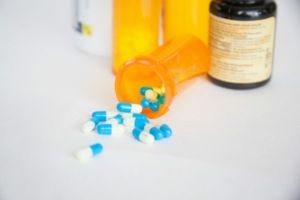News
Health News in Brief: Danish ‘suicide doctor’ posts ineffective instructions on how to kill yourself online
This article is more than 7 years old.
In other news, stress management around Denmark is improving and the University of Copenhagen has unveiled new discoveries about antibiotic resistance.

The seized shipments contained over ver 8,000 doses of medicine (picture: Flickr, wp paarz)
Svend Lings, a retired Danish doctor, has been widely criticised for publishing a post on the Aktiv Dødshjælps website detailing the fatal doses of many prescription drugs and how to successfully commit suicide using them.
The ‘Suicide Doctor’ believed the publication would avoid the unnecessary suffering of suicide survivors, who may suffer permanent mental and physical debilitation.
Kim Dalhoff, an expert in toxicology at Bispebjerg Hospital, commented that the recommended doses do not guarantee death.
The chair of the Medical Association’s ethical committee, Lise Møller, additionally said that the act was ”totally unacceptable and very inhumane”.
The post has since been taken down.
Danish municipalities to institute new nine-week stress reduction program
A new nine-week meditation program designed to decrease the costs of stress has been so effective that the National Board of Heath has said all municipalities should adopt it. ‘Åben og Rolig’, which has helped 3,000 Danes over the last five years, has not just relived stress for those individuals, but helped in reducing approximate annual costs of 2 billion kroner. It is believed that one in four Danes suffer from high levels of stress. The Center for Mental Health Promotion said the current quality of stress management in the municipalities is inadequate.
University of Copenhagen identifies antibiotic resistance enzyme
A new enzyme has been shown to initiate a hibernation survival program in disease-causing bacteria that allows them to survive antibiotic action. Antibiotics work by targeting a cell’s ability to grow and multiply, thereby stopping this process until the antibiotic is flushed away. The bacteria is then able to lie dormant and survive, ready to cause infection later. This research comes from a new study at the University of Copenhagen and, as Professor Kenn Gerdes explained, ”if you can develop an antibiotic to target the enzyme, you can fight antibiotic resistance.”










































